- Home
- slideshows
- miscellaneous
- Photos over 70 years show how North Korea's Kim family went from starving guerilla fighters to going toe-to-toe with Trump
Photos over 70 years show how North Korea's Kim family went from starving guerilla fighters to going toe-to-toe with Trump
Korea, a peninsula between powerful Chinese and Japanese empires, forged its own unique identity under the Chosun dynasty from the 14th to 20th centuries. Below is the first known photograph of Koreans ever taken.

Despite the strong identity and culture, Chinese influence permeated much of its culture. The rigid ideas of Confucius, a Chinese philosopher, shaped Korean ideas of loyalty and ritual as proper behavior in relationships, citizenship, and society.
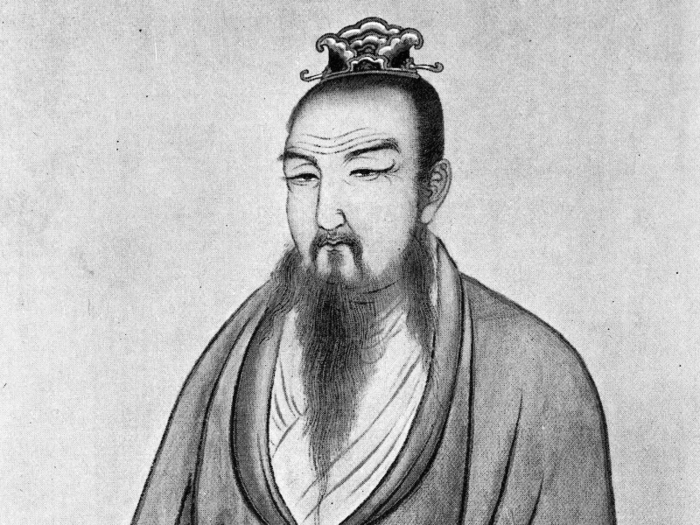
In 1910, the peninsula's days of self-rule came to a brutal end when Japan forcefully colonized it and then ruled with an iron first. Japan brought to Korea its own racial purity and hierarchy-obsessed ideas.
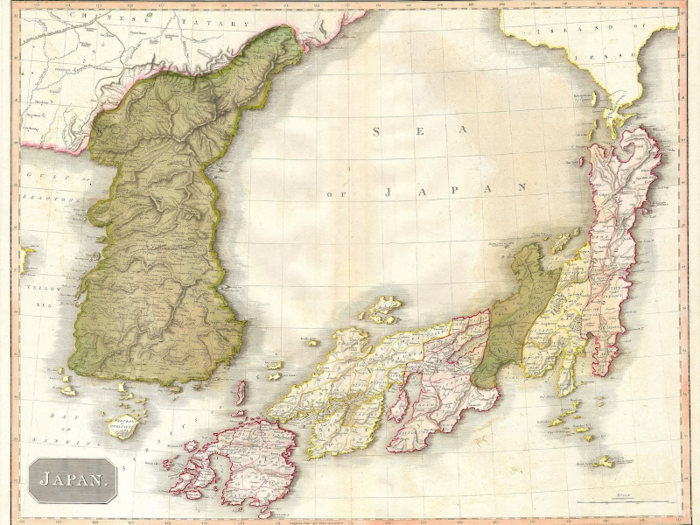
In much of Southern Korea, Korean men could either submit to Japanese rule or be hunted like dogs. Further north, a Korean guerrilla movement was founded in the 1930s to resist Japanese occupation. A rising star in that movement was a young communist name Kim Il Sung, who was noticed by Soviet leaders and sent to the Soviet Union to train.
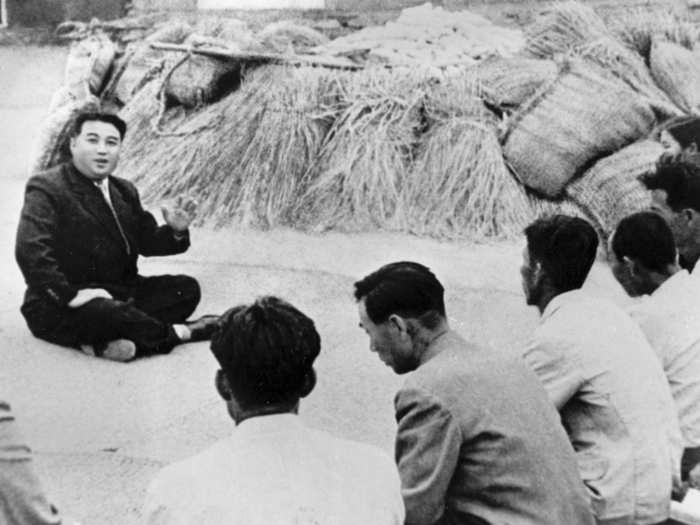
While fighting against the Japanese, Kim met a fellow revolutionary named Kim Jong Suk. He would later marry her and found the Kim dynasty.
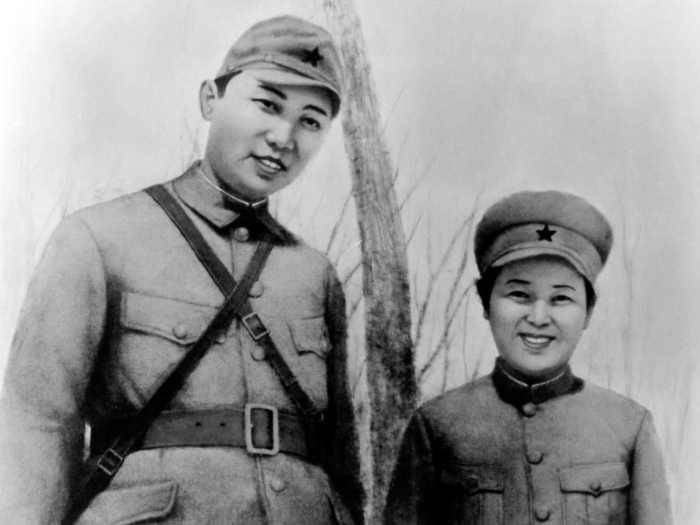
When the western world first declared a second world war, Korea had been fighting for its life for decades. By 1939 Japan, still controlling Korea, forced millions of Koreans to become laborers for Japan's imperial war machine. Tens of thousands of men were conscripted as soldiers to fight for their colonial overlords. Hundreds of thousands of women from China and Japan were also forced into sex slavery as "comfort women" for the Japanese. The issue of comfort women still haunts Korean-Japanese relations to this day.
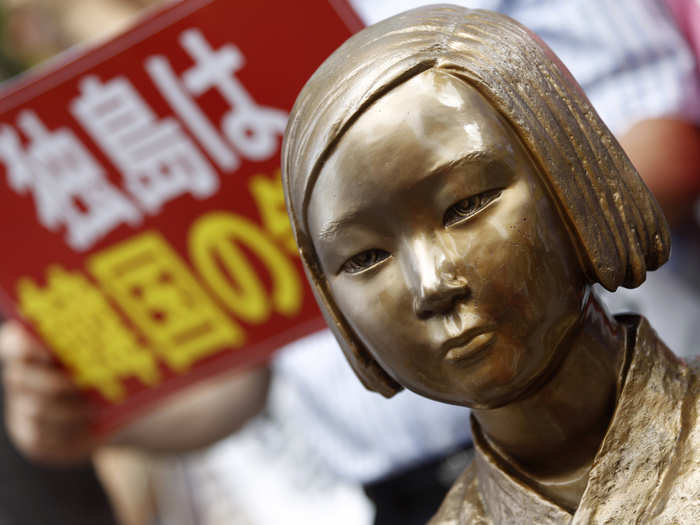
Kim Il Sung, meanwhile, served as a major in the Soviet army.
After Japan's defeat in 1945, the US and Soviet Union, mostly focused on richer, more geopolitically relevant Europe, divided the peninsula along two zones of influence along the 38th parallel.
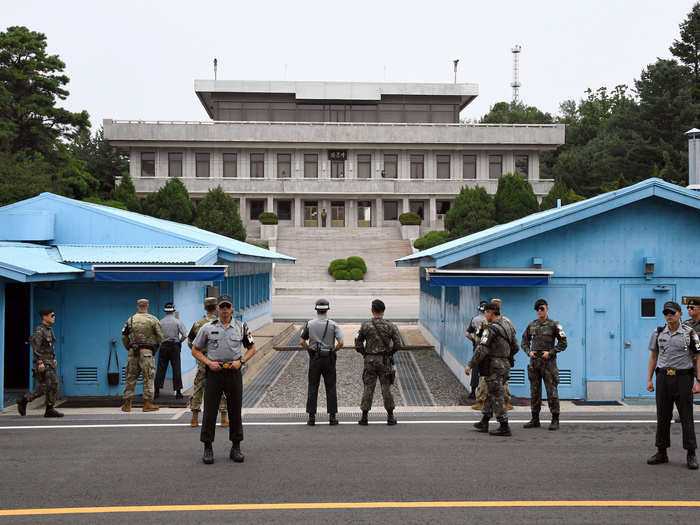
The original plan was to unify north and south Korea to create a unified country. But North Korea, under Kim's leadership, saw itself as the true Korea that stood firm while the South Koreans capitulated to Japanese, and then US power. The people of south Korea elected a government in May 1948, creating the Republic of Korea, while the north refused any part of it.
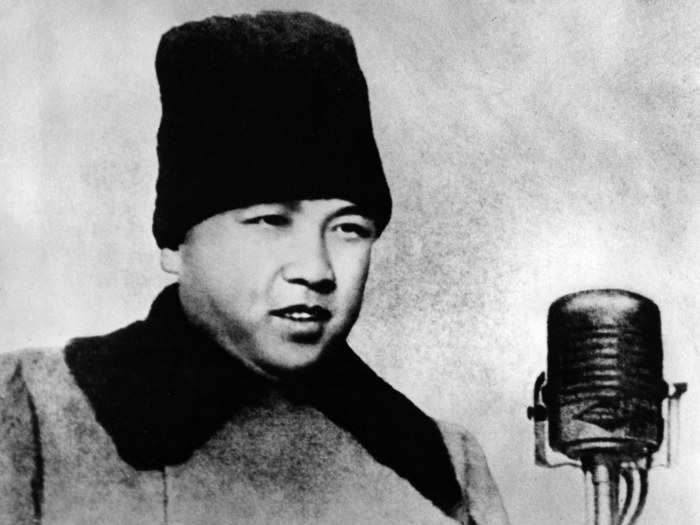
Four months later, in September, Soviet-backed communists in North Korea created the Democratic People's Republic of Korea (North Korea), with Kim Il Sung as its leader. At this point it would be a communist provisional government until the two Koreas could unite again.
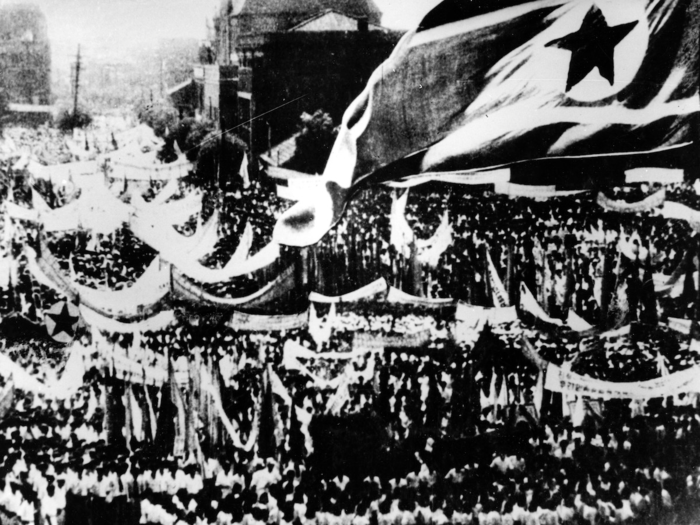
A year later Kim installed himself as head of the central committee of the North Korean Workers' Party — the sole governing party of North Korea.
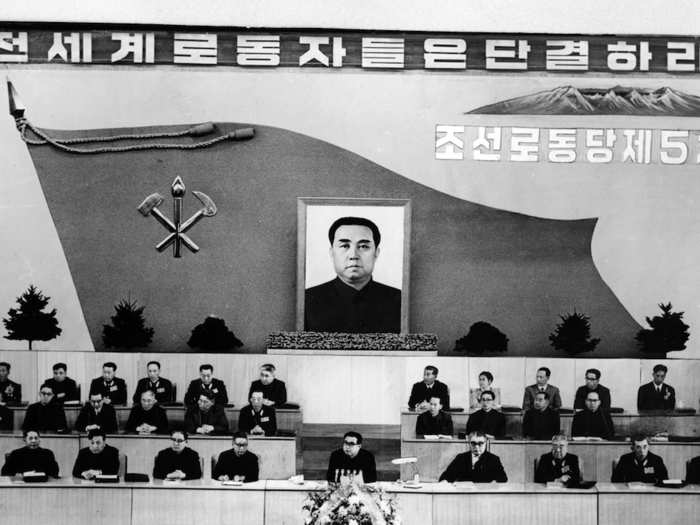
In 1950, North Korea invaded the South hoping to reunify the peninsula under Kim by force. The US and UN forces joined the fight to protect South Korea's elected government while China and Soviet Union joined North Korea in the fight against US influence in Asia. The Korean War marked the first major conflict of the Cold War.
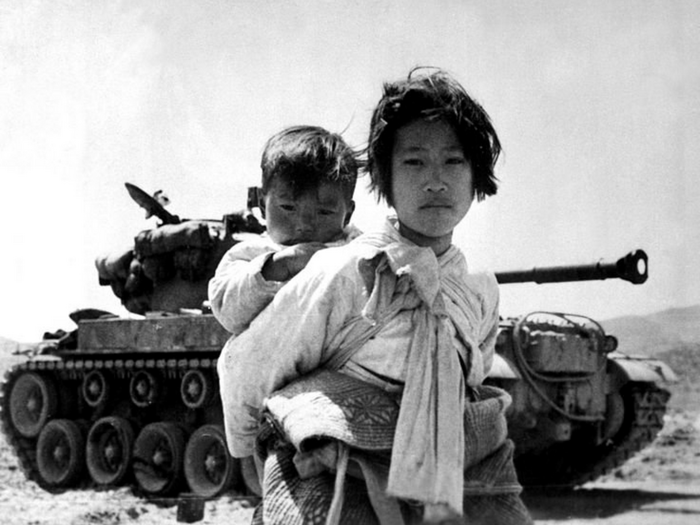
Source: CNN
Three years and more than 600,000 Korean deaths later, the North and South signed an armistice and established a heavily-guarded demilitarized zone (DMZ) between along the fateful 38th parallel. This was not a full peace treaty, though, meaning the two countries technically remained at war and exceptionally bitter. During the fighting, the US dropped more bombs on North Korea than it did in the entire Pacific theater of fighting in World War II.
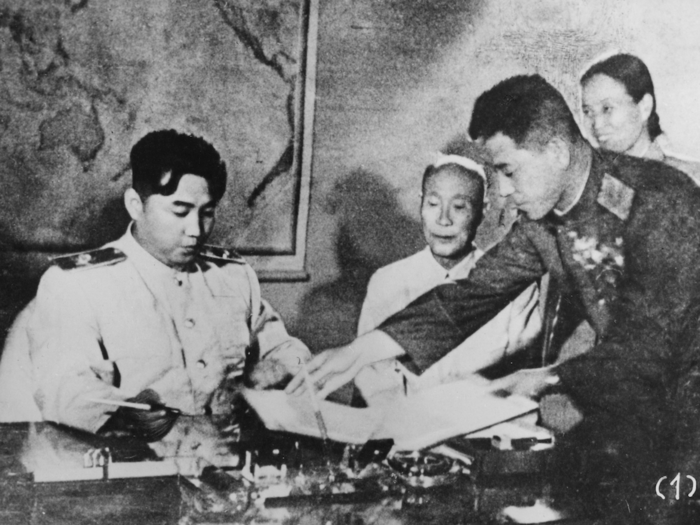
Back at home, Kim strengthened his hold over the country by instituting its"juche" ideology, which emphasizes the self-reliance and independence of North Korea from the rest of the world — including the Soviet Union and China — and state control over the economy.
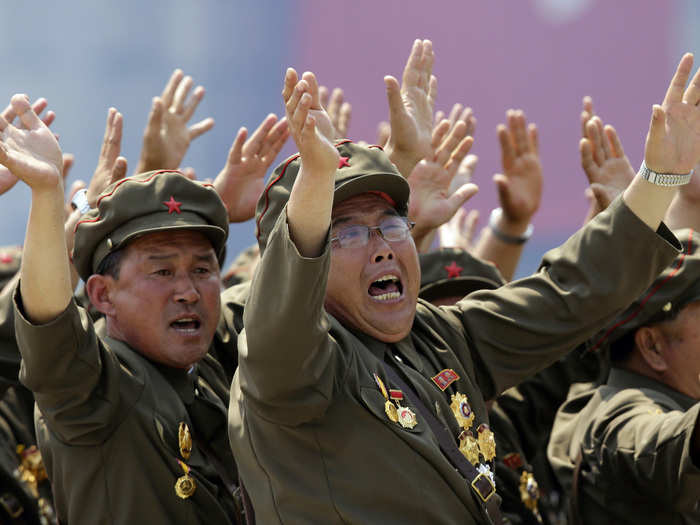
Under juche, the country also became incredibly secretive, restricting what the media could print and travel in and out of the country.
Kim also clamped down on internal dissent. The most famous incident came in August 1956, when a group of pro-China communists in North Korea — named the Yan'an faction — plotted to remove Kim from power when he was on a trip to the Soviet Union. Kim learned about the plan and purged the conspirators by throwing them in prison or executing them. This would be one of many brutal crackdowns by Kim against his own people.
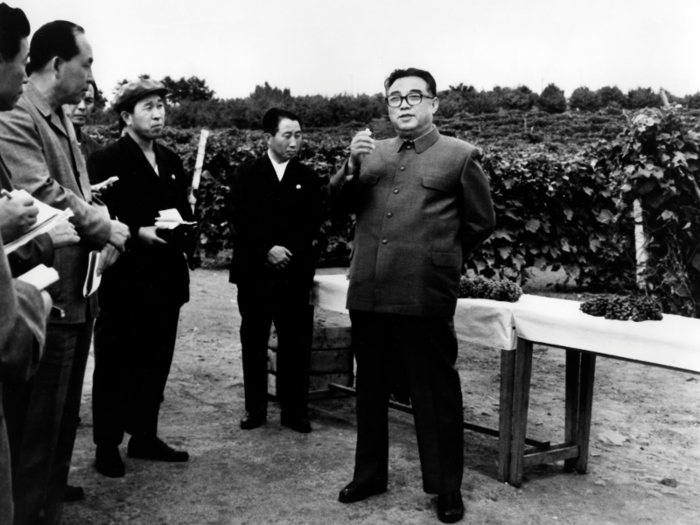
Some of the conspirators' descendants may still be in in political prisons, the BBC said.
By this time, Kim had also built a massive cult of personality around him. He ordered statues of himself to be built around the country and his name to be printed in bold in documents so it would stand out. He also ordered citizens to hang portraits of him in their homes.
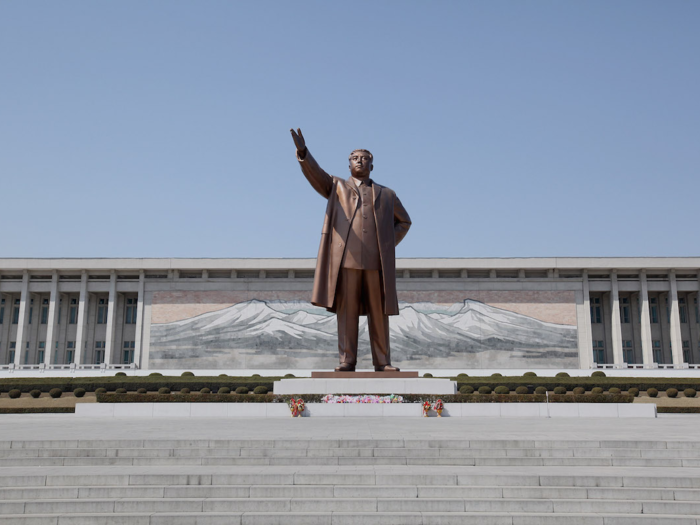
North Korean children were taught that they were clothed, fed, and nurtured by the "grace of the Chairman."
Source: Korean Broadcasting System
Kim also played on the Confucian philosophy of respecting elders by having citizens address him as "Father Chairman," "Great Chairman," or "Heavenly One." His wife, Kim Jong Suk, was also referred to as the "Mother of the Nation."
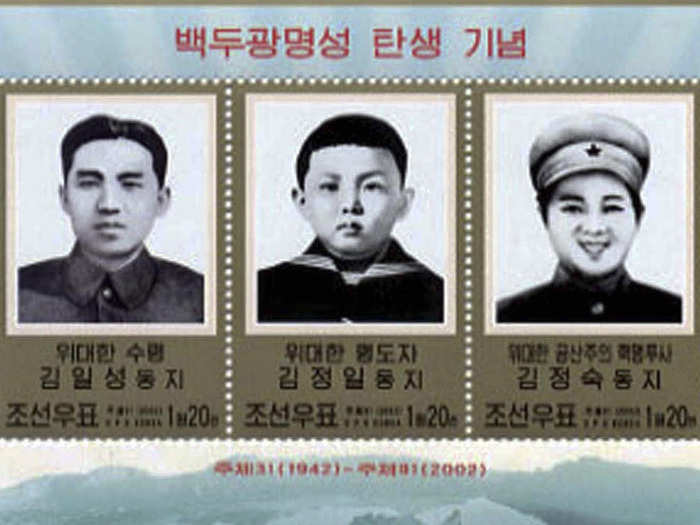
As part of its goal to become self-reliant, North Korea also went through a phase of rapid industrial growth, which prioritized heavy industry. Throughout the 1960s, the military hired technical engineers and IT experts to build up the country's arsenal — which also led to a shortage of experts to build civilian structures. The Kim family stealing wealth from civil projects to bolster its military is another unfortunate trend that's forced millions of Koreans into poverty and starvation.
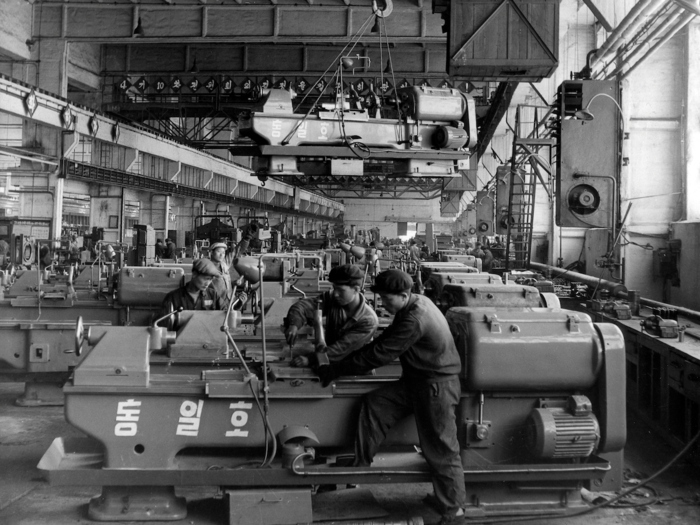
Balazs Szalontai, a professor at Kookmin University in Seoul, told NK News: "From 1962 on, the very best technical experts, such as engineers, IT specialists and the like have been regularly siphoned off by the military establishment, and thus their knowledge could not make a contribution to the civilian sector."
But the industrial push appeared to have worked. In fact, the North Korean economy had become so advanced that its nominal GDP per capita was higher than South Korea's in 1976.
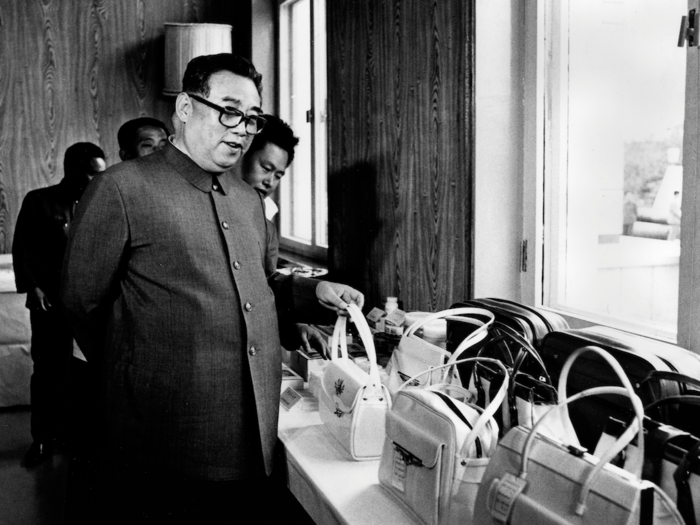
The CIA also reported in 1978 that North Korea's agricultural technology was more advanced in the South, and that living standards in rural areas had "probably improved faster than in the South."
But the country's economy began to stagnate in the 1980s, around the same time South Korea's economy started booming. Family-run conglomerates like Samsung started expanding into electronics and exporting more products to North America.
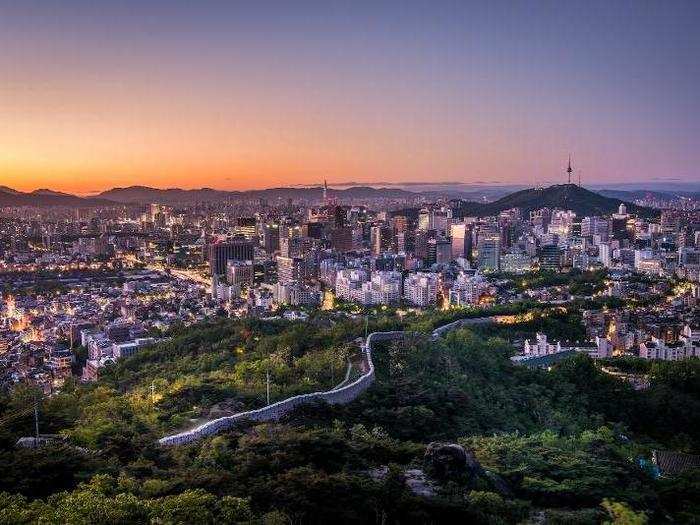
Around this time North Korea also started to re-enter the international community. In 1985 the country acceded to the global Nuclear Non-Proliferation Treaty. But within a decade North Korea would betray this promise with a full-on sprint towards nuclear capability.
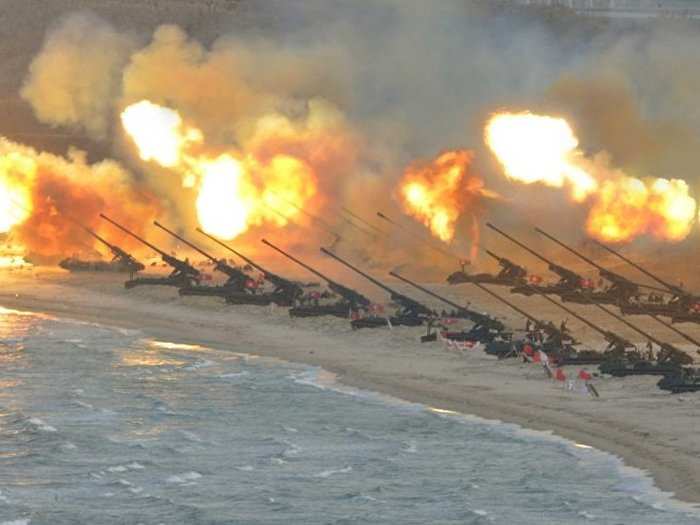
Long before North Korea's nuclear weapons, its massive artillery installations deterred a US or South Korean invasion.
Pyongyang's international outreach at the time saw Kim Jong Il sending his son, Kim Jong Il to China, which since World War II had been a strong political and economic ally to the North Korea. While on the fateful trip to China in 1983, the younger Kim attended a state concert with a senior member of the Chinese Communist Party named Xi Zhongxun — who was also the father of China's current president, Xi Jinping.
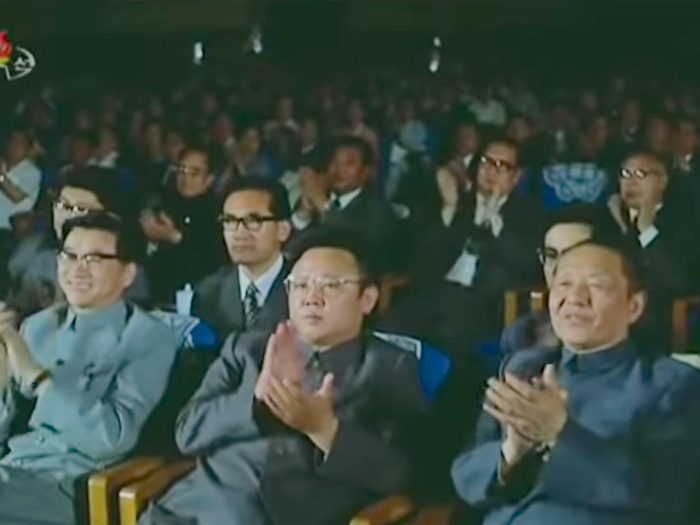
In the early 1990s, Kim Il Sung's health deteriorated. Kim Jong Il, who was around 50 at the time, was the designated successor and started stepping up his role in North Korean politics. Now all North Koreans had a second portrait to hang in their homes.
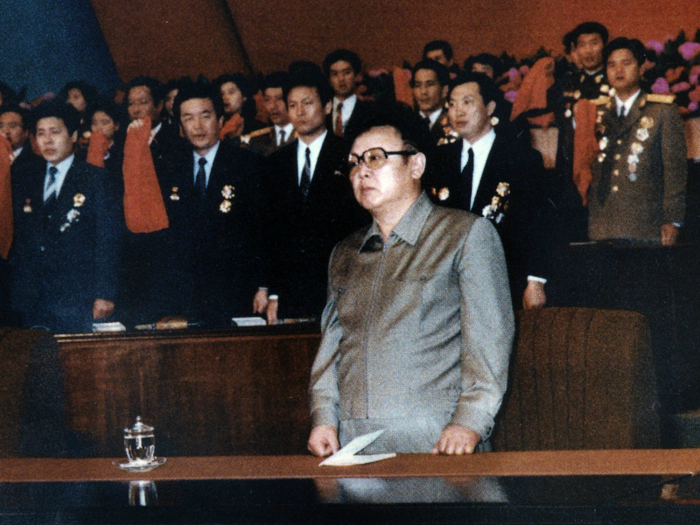
Kim Jong Il was an eccentric film buff who loved the finer things in life: Basketball, cognac, and lobster. Bizarre anecdotes of excess and obsession mark his time as North Korea's leader.
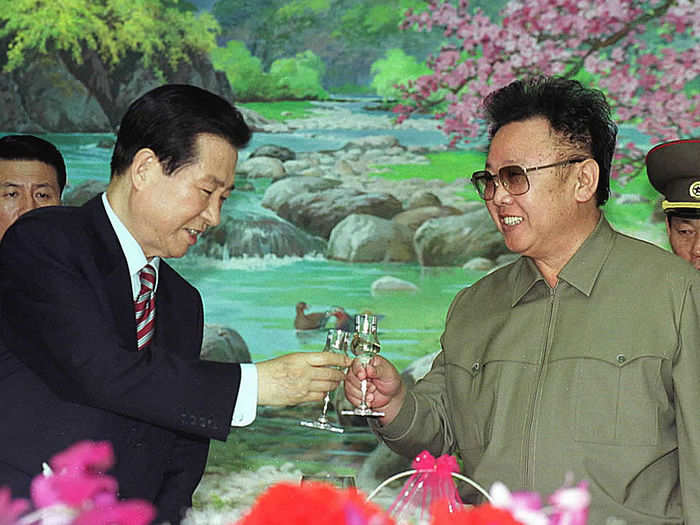
Source: BBC
He reportedly had a library of 20,000 Hollywood movies, with his favorites being the James Bond franchise and anything with Elizabeth Taylor. His movie obsession took a dark turn when he had a South Korean director and actress kidnapped in 1977 to help him film propaganda movies. They worked for him for eight years before they escaped.
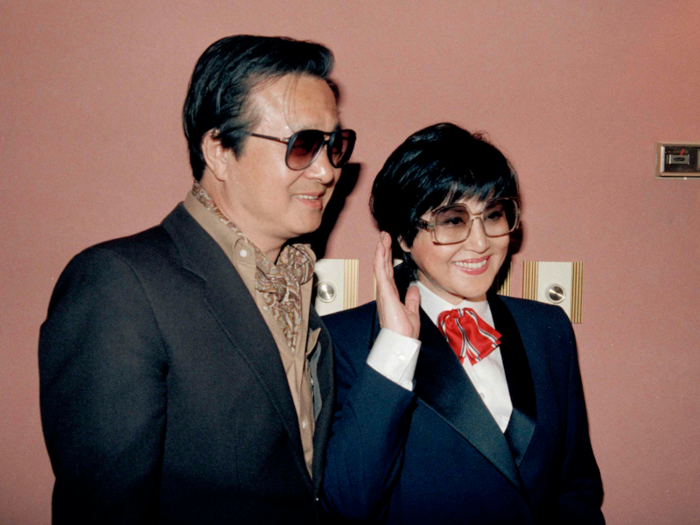
They produced a series of films for the North Korean dictator, including one about a monster fights a feudal landlord alongside a group of peasants.
Source: BBC
In the early years of his reign Kim Jong Il consolidated power — like his father — by removing officials from their government roles, sending them to prison, or having them shot. Experts estimated he purged as many as 2,000 officials in the first three years of his reign.
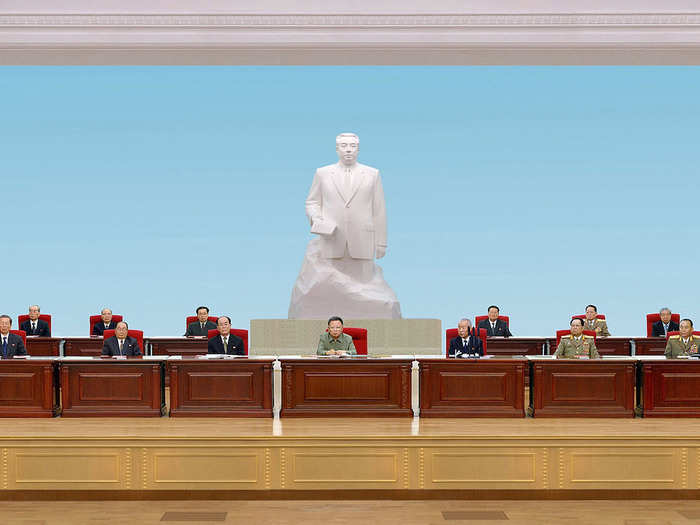
Source: Yonhap News, Chosun Ilbo
He also formally introduced the policy of songun ("military-first"), which emphasized a strong North Korean army. He was keen on building a large army: In 1993, when his father was still alive, he ordered mandatory military service to be extended to ten years.
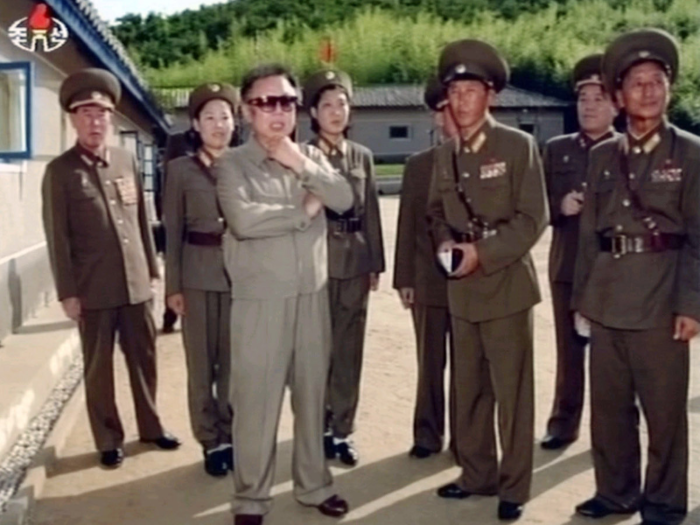
As leader, he had to travel in and out of the country often. But he was reportedly afraid of flying, so he had a bulletproof armored train made instead. It had a red-carpeted ramp on which he could board the train. A Russian emissary who traveled with Kim said the leader had champagne and live lobsters air-lifted to the train every day, which he ate with silver chopsticks.
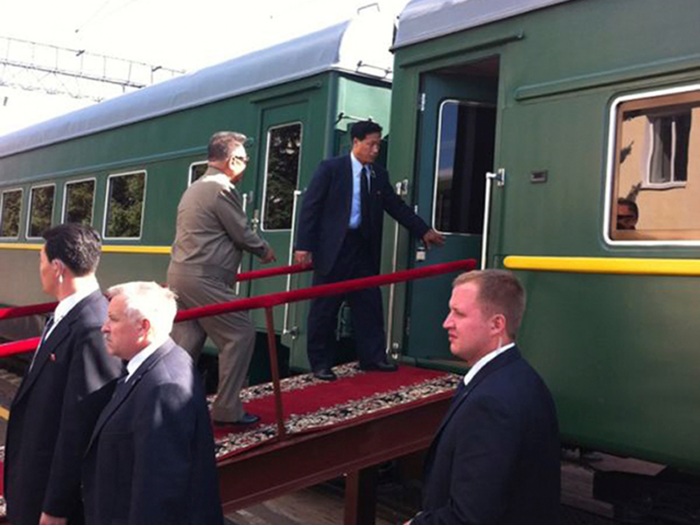
Around this time, US intelligence agencies estimated that North Korea had enough plutonium to produce one or two nuclear warheads. In 1994, the Clinton administration and North Korea signed an "Agreed Framework" in which Pyongyang agreed to freeze construction of nuclear reactors and plutonium production in exchange for economic aid.
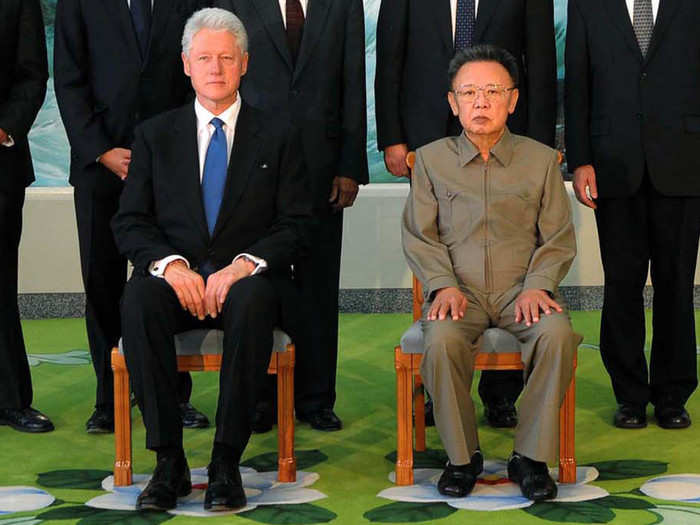
The agreement broke down eight years later, when the George W Bush administration accused Pyongyang of cheating by secretly pursuing a uranium enrichment program. North Korea accused the US of backing out of its end of the deal.
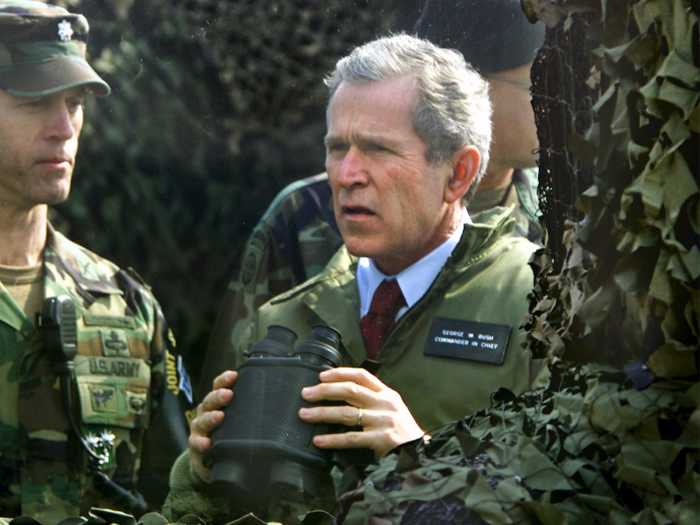
Meanwhile, North Korea grappled with one of its worst humanitarian crises in its history from 1995 to 1998. The fall of the Soviet Union in 1991 left the country without one of its biggest sources of fertilizer, causing crop production to plummet. A series of floods made everything worse.

Source: The Atlantic
Kim initially resisted a cult of personality around himself, forbidding his country to erect statues of himself. This lasted until 1996, when many statues eventually went up.
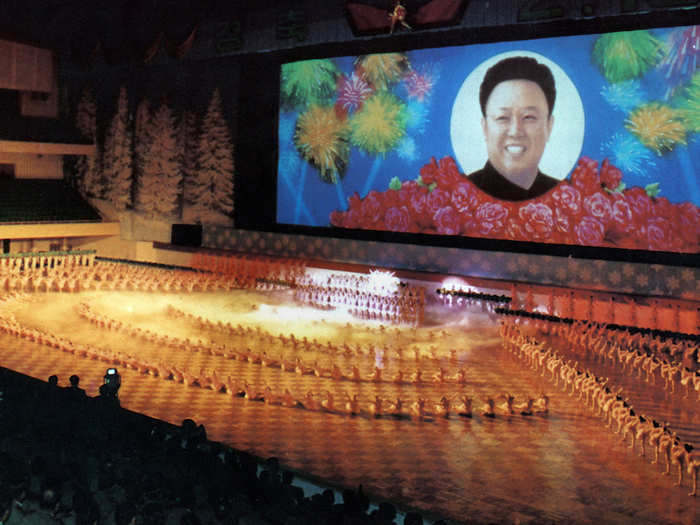
The government also cut the country's rations, but saved food for themselves and their families. Experts at the time said the famine — also known as the "Arduous March" — may have killed some 2 million people. The population was around 22 million at the time.
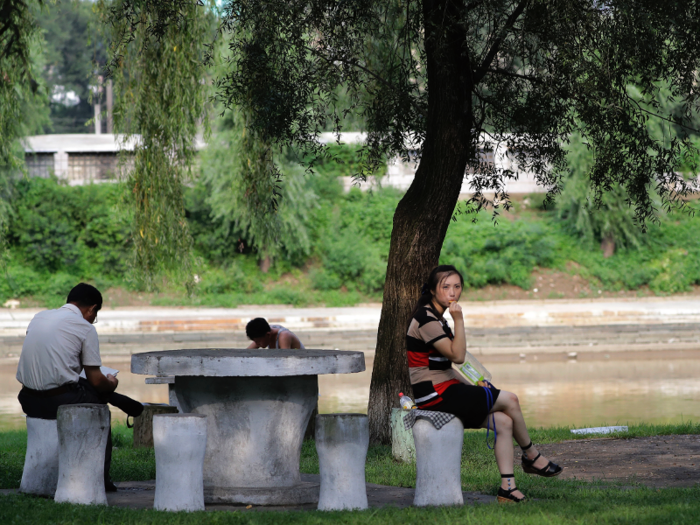
Mina Yoon, who lived through it, described seeing a kernel of corn being "more valuable than gold" and said that eating a cake made of pine bark was "like Christmas."
Source: The New York Times, The Guardian, The Atlantic
In 2006, North Korea went nuclear by testing a bomb in an underground facility under a mountain. This would be the first of six increasingly large nuclear tests from the North Korea, the only country to test nuclear weapons in the 21st century.
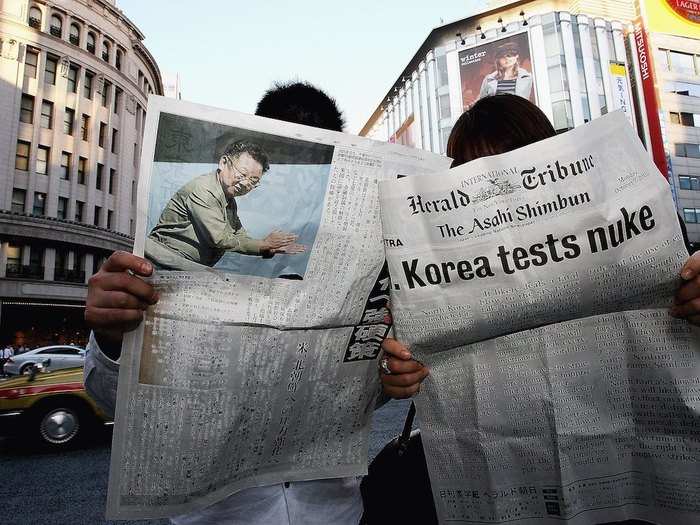
In 2008, Kim Jong Il suffered a stroke. It was time to start grooming a new successor. Enter Kim Jong Un.
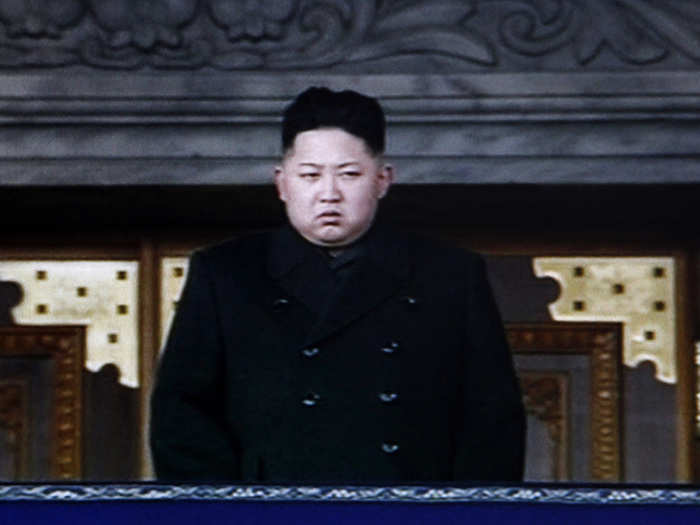
Kim Jong Il's top choice was his third son Kim Jong Un, who was at the time in his early 20s. He spent his teenage years studying in Switzerland. Like his father, he loved Western media and was a huge fan of basketball, Jackie Chan, and Jean-Claude Van Damme, according to his classmates. But like Kim Il Sung, he had an intensity and revolutionary mindset.
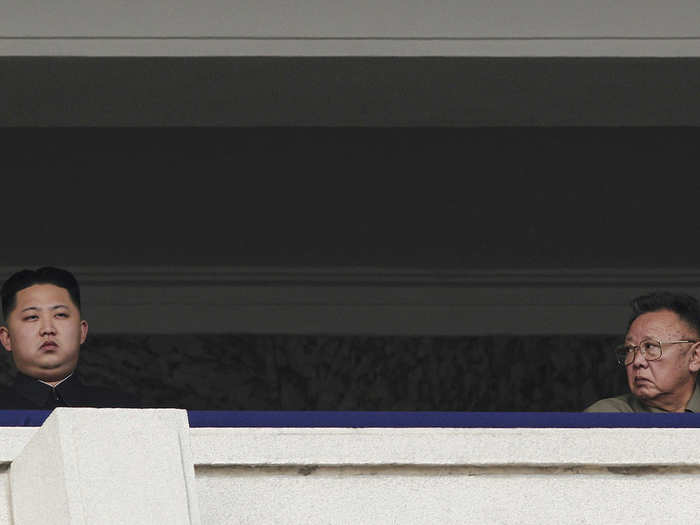
He reportedly had a chaotic temperament that would foreshadow his leadership. According to a South Korean researcher, he shocked his high-school girlfriend when he "exploded with foul language" when she advised him to quit smoking.
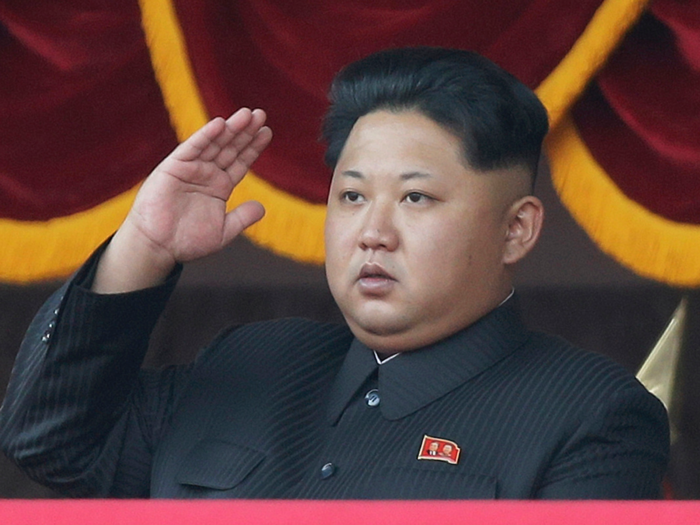
As the third son, Kim Jong Un wasn't the apparent heir to the North Korean dynasty. But his oldest brother Kim Jong Nam fell out of favor with their father, and had been living in exile in the gambling city Macau. His second brother Kim Jong Chul was also passed over because their dad thought him "no good because he is like a little girl," according to the household chef.
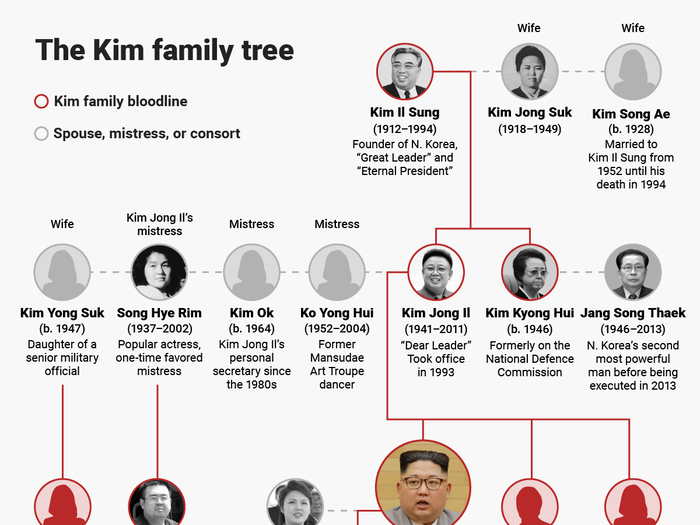
Kim Jong Il died in 2011. Video from his state funeral that December showed Kim Jong Un tearfully mourning his father's loss.
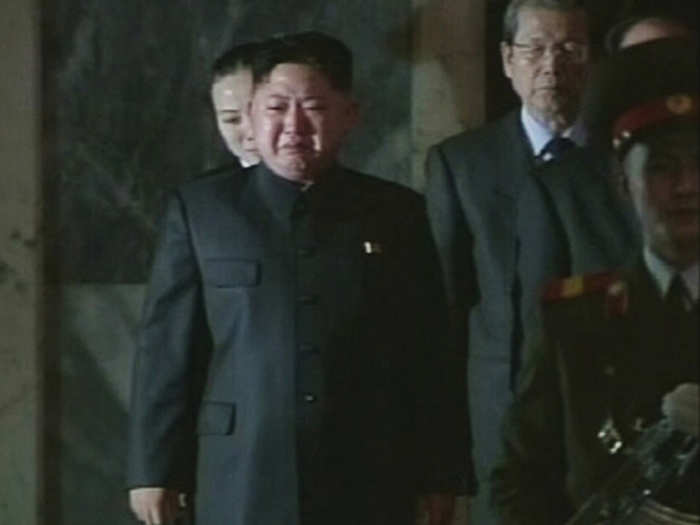
Kim took a hard approach to his leadership style. Like his father and grandfather, he consolidated power by removing dozens of the country's top commanders from their positions, even having some of them killed. One of them was his uncle, General Jang Song Thaek, who was convicted of treason and killed in 2013.
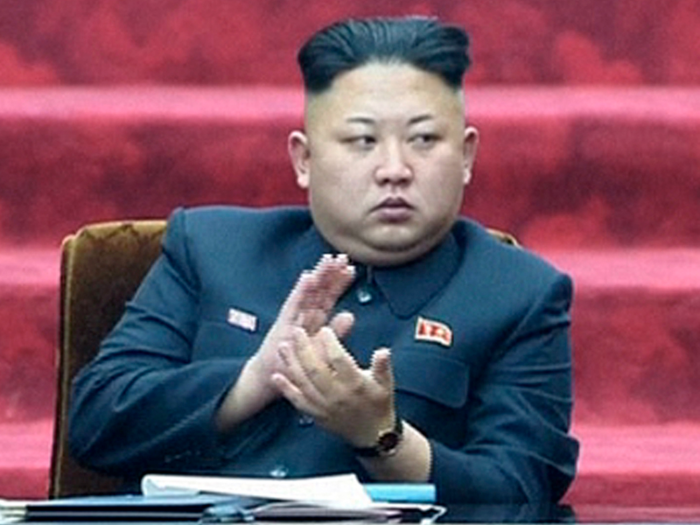
Jang was shot multiple times by an anti-aircraft gun, Reuters reported, citing South Korea's National Intelligence Service (NIS). This account has not been confirmed, however.
Evan Medeiros, Obama's chief Asia adviser, told The New Yorker that Kim Jong Il's "approach to managing elites appeared to be more incentive-based than coercion-based, making sure that they all got goodies and spoils."
Kim Jong Un's was more like: "If you screw with me, I’m just going to kill you — and I'm going to kill you in a really nasty way," Medeiros said.
Kim continued to build on his family's legacy, prioritizing nuclear development and building a large military. Between 2011 and 2016, he spent some $300 million on 29 nuclear tests, according to South Korea's National Intelligence Service.
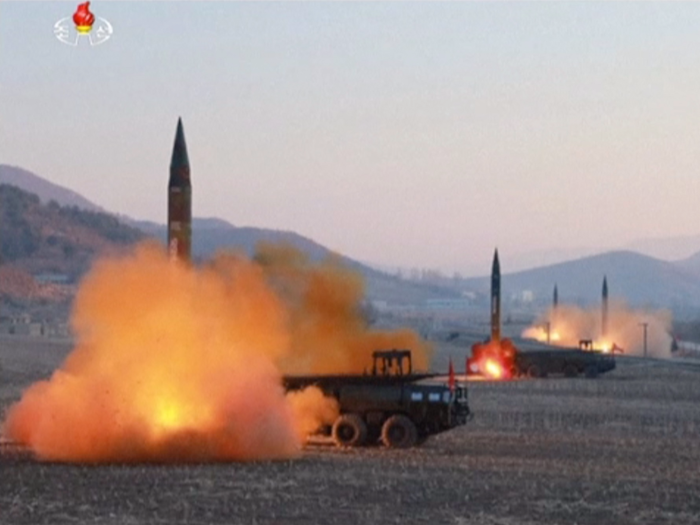
Source: Reuters
He also spent $180 million on some 460 statues of his family in those years, the institute said.
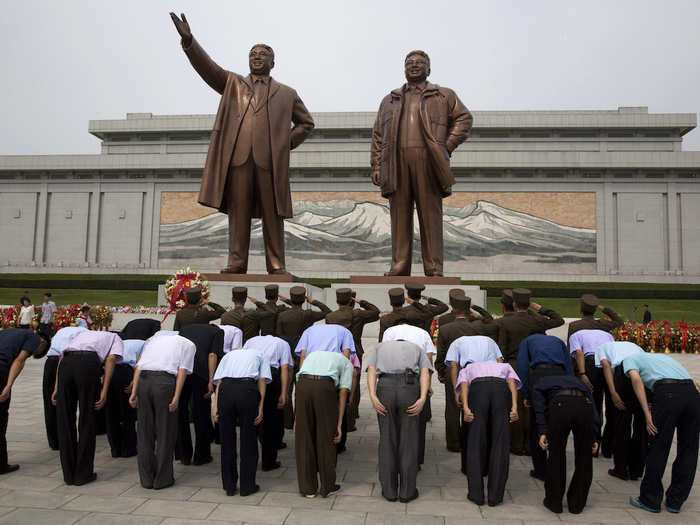
Source: Reuters
They came at the country's expense. A series of bad harvests in the late 2000s and early 2010, combined with the US's suspending food aid to North Korea, meant that millions of people suffered from malnutrition and lack of access to water.

Source: The Telegraph
Meanwhile, South Korea, having dwarfed North Korea's economic might, now enjoyed massive foreign trade, a vibrant media culture producing Kpop and televised dramas, and a strong partnership with the US.
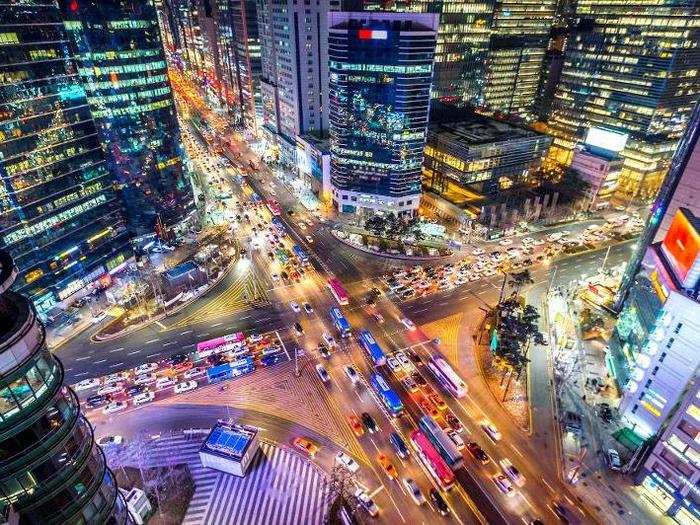
The rich and modern South Koreans often sought to collapse North Korea's rigid traditional system by air-dropping DVDs and blasting Kpop on loudspeakers.
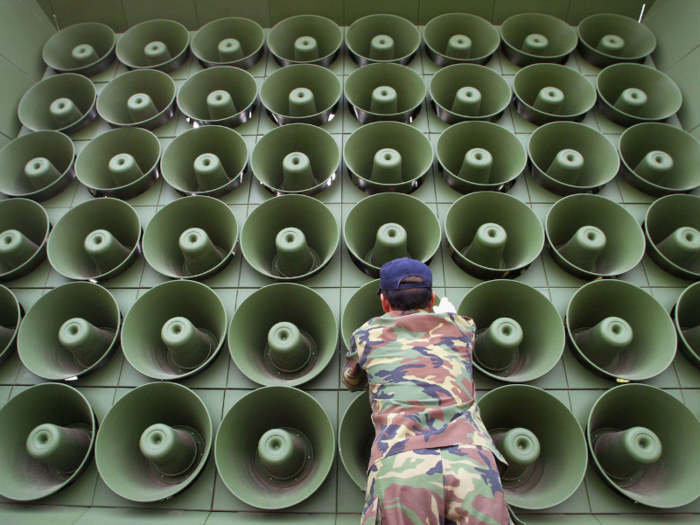
Though North Koreans frequently import and enjoy South Korean media — even at the risk of imprisonment or death from the Kim regime — the government in Pyongyang proved resistant. Kim, like his grandfather, continued to close off the country from foreign influences. Ultimately, the US and South Koreans underestimated the draw of national identity imposed by the Kim regime, while overvaluing the draw of the fruits of capitalism.
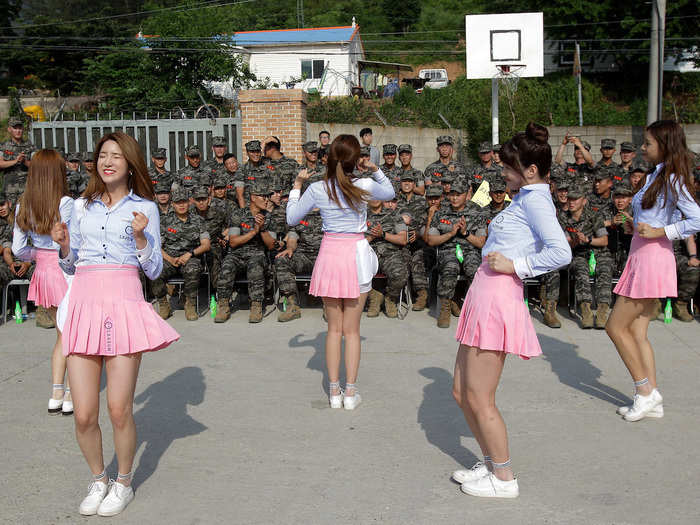
He has, however, allowed for a bit more freedom by recently giving the public access to movies like "The Lion King" and "Tom and Jerry," according to a defector.
In 2015, Kim further distanced North Korea from the South by creating a new time zone — named "Pyongyang Time" (PYT) — for itself to mark the 70th anniversary of Korea's liberation from Japan. Pyongyang Time is 30 minutes behind Korea Standard Time (KST), which is South Korea's time zone.
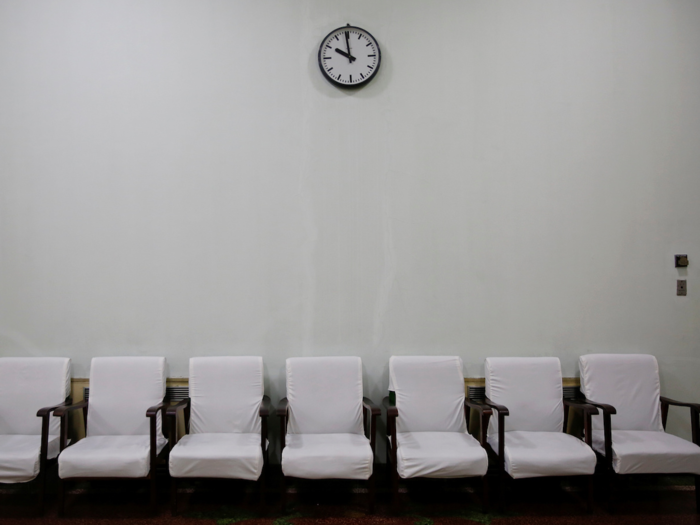
Kim moved the clocks 30 minutes forward in April after meeting with South Korean President Moon Jae-in for the first time in a gesture of goodwill.
Kim Jong Un's resemblance to Kim Il Sung didn't just come in the form of policy. He also made himself look more and more like his grandfather, gradually putting on more weight and started sporting a haircut and horn-rimmed glasses.
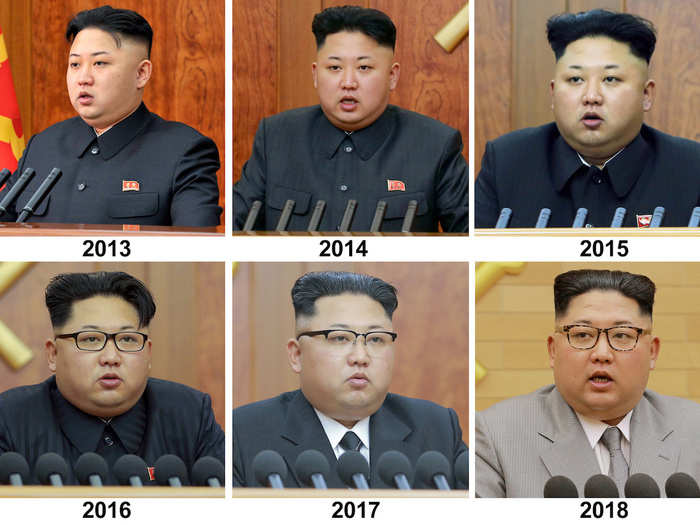
The resemblance is uncanny.
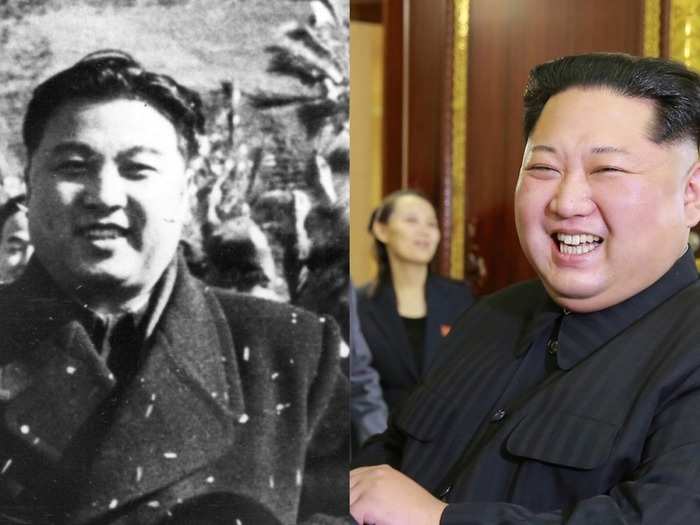
Kim made efforts to boost North Korea's economy to some success, but the South had taken off like a rocket. This startling satellite photo from 2015 shows the difference in the two countries' economies — North Korea shrouded in darkness at night, while South Korea is bursting with light.
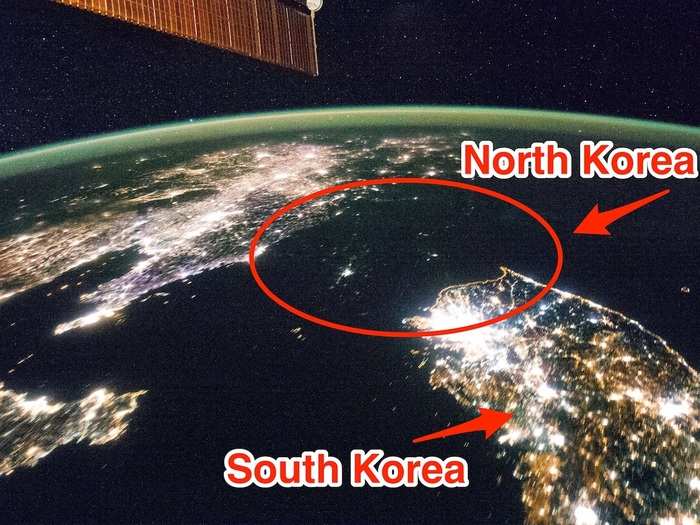
Economic planning in the country was "very haphazard," Szalontai told NK News. "Plan targets were set by politicians with big ambitions and limited insight into actual capabilities, rather than by technical experts able to judge what one could or could not achieve within a specific time frame."
In 2016, it became clear that Kim's ruthless crackdowns on threats to his regime knew no bounds. Kim's half brother, Kim Jong Nam, was killed in a nerve agent attack in Malaysia attributed to North Korean assassins. By killing Kim Jong Nam, Kim Jong Un secured his place as the one true heir of his dynasty. Kim Jong Nam's children now live in secrecy for fear of assassination.
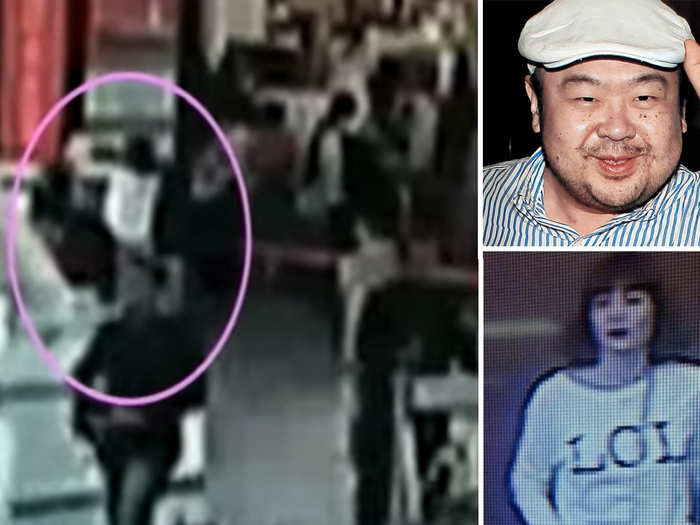
Throughout the Obama administration, the US employed what it called "strategic patience" towards North Korea. This meant the US would sanction and isolate the country hoping it would fail to build credible nuclear weapons and eventually come to the table to negotiate. This didn't work out.
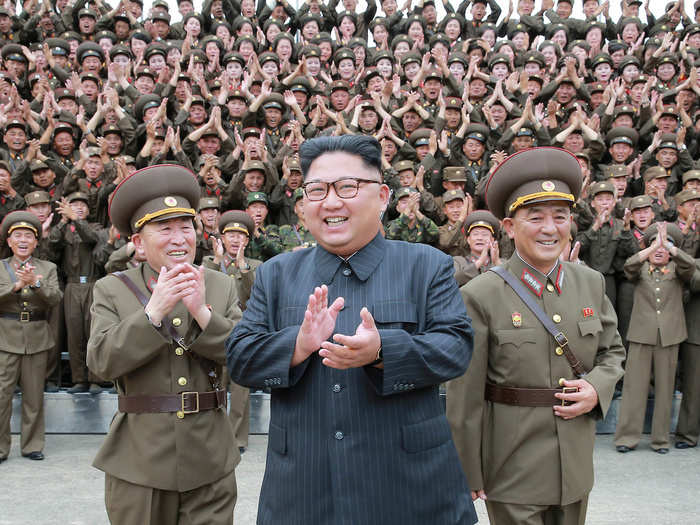
Kim successfully tested an arsenal of weapons with growing ranges, increasingly threatening the US mainland. At the same time, a revolution was taking over US politics. His name was Donald Trump, and he had new ideas about North Korea.
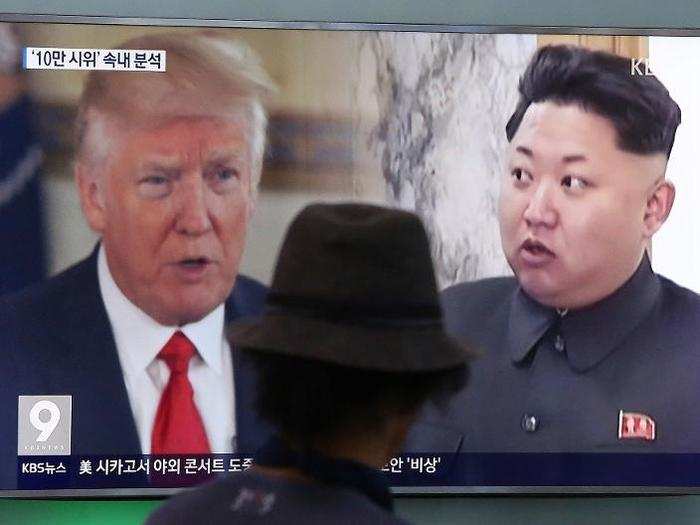
Trump's arrival in the White House marked one of the most volatile period in bilateral history with North Korea. Trump would alternately muse about talking to Kim over cheeseburgers and then threaten him with nuclear "fire and fury the likes of which the world has never seen." Kim responded by threatening to test a nuclear bomb over the Pacific and to fire missiles at the US military in Guam.
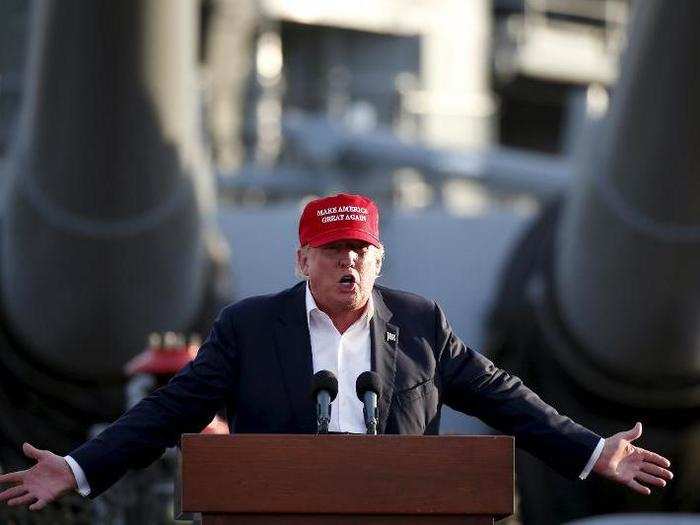
But the game forever changed on July 4, 2017 when North Korea tested the Hwasong-14, its first-ever intercontinental ballistic missile. Experts estimated it could reach the US mainland with a nuclear device, meaning US lives were in Kim's hands.
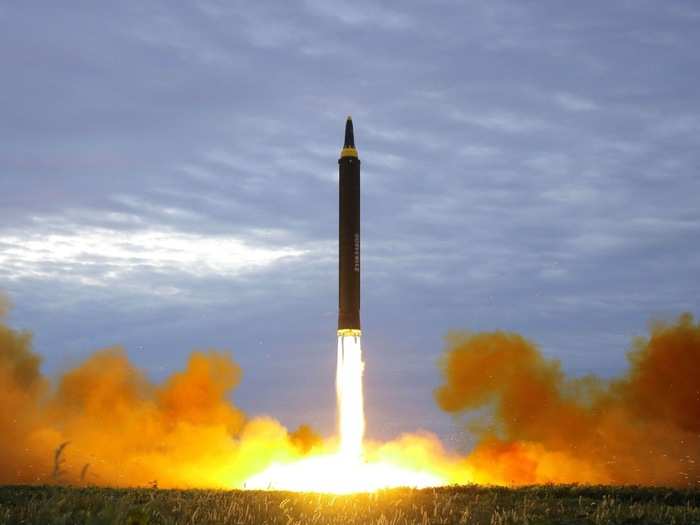
But despite the intense rhetoric and calls on both sides for preemptive war, something unexpected happened. South Korea's long time conservative government got ousted by a bizarre corruption scandal and a new, pro-North Korean engagement president took over: Moon Jae-in.
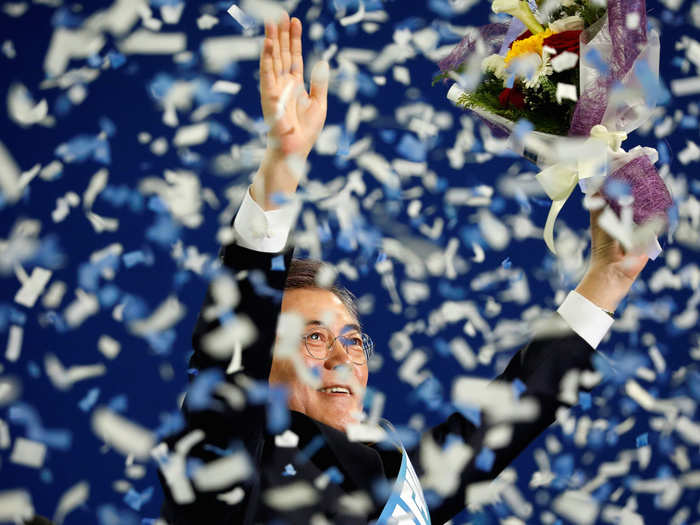
At the same time, South Korea prepared to host the 2018 Winter Olympics. Though both countries spent decades as bitter enemies divided by a heavily guarded border, Koreans still see themselves as a single people longing to reunite. President Moon and Kim used the opportunity to hold some low-level dialogue that resulted in some North Korean participation in the games.
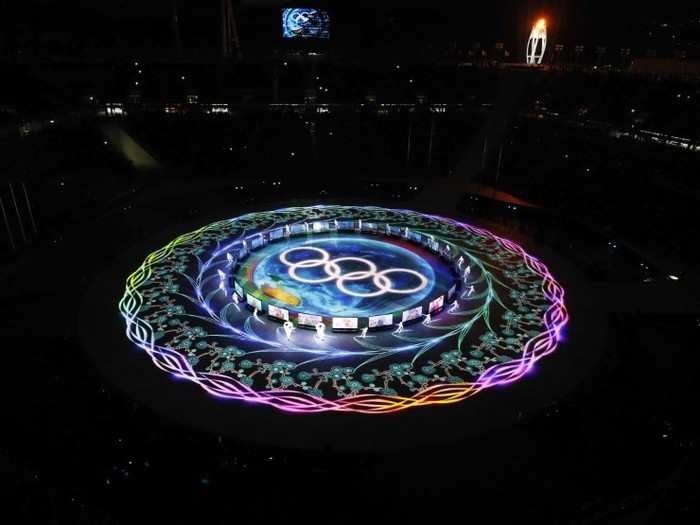
On April 27, 2018, following warmed relations after a successful Olympics, Kim met President Moon — marking the first time the leaders of North and South Korea met. As Kim crossed a demarcation line marking the border between the two countries, he also became the first North Korean leader to visit the South.
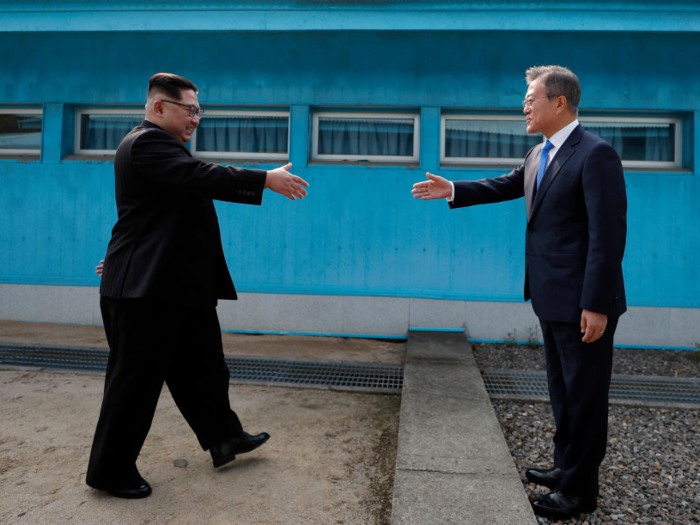
At this conference, North and South Korea also pledged to formally end the Korean War, and denuclearize the peninsula.
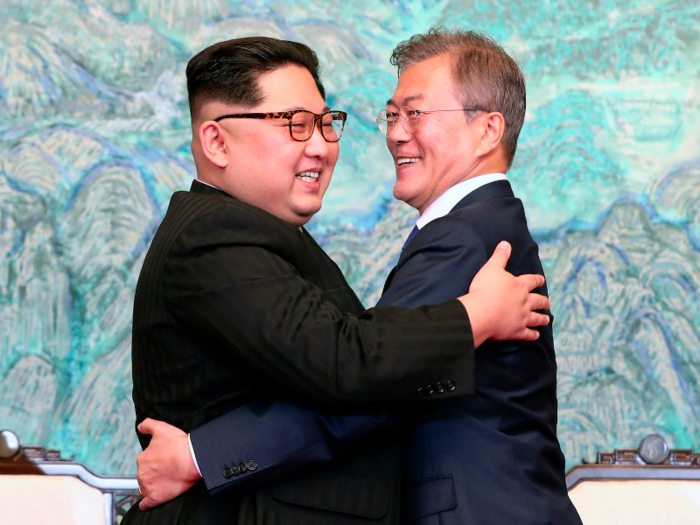
In a stunning reversal in June 2018, Kim also became the first North Korean leader to meet a sitting US president ever. The meeting and warm relations that followed walked back almost seven full decades of hatred between the countries and to this day has lowered the specter of nuclear war.
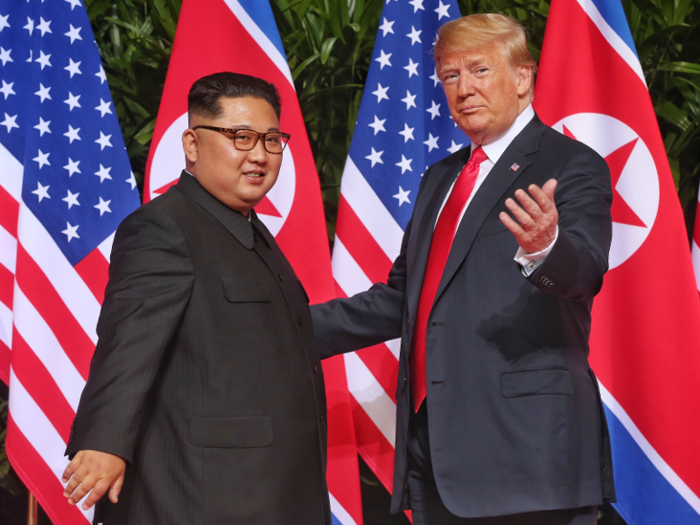
But now, talks between the US and North Korea have stalled as Kim seems as unwilling as his father was to denuclearize. Experts warn that the relations could again sour at any minute and plunge the US back into war footing against Pyongyang.
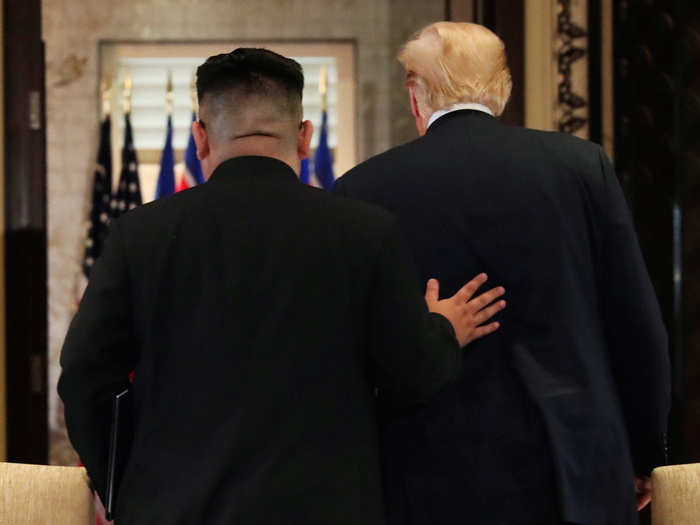
Popular Right Now
Advertisement